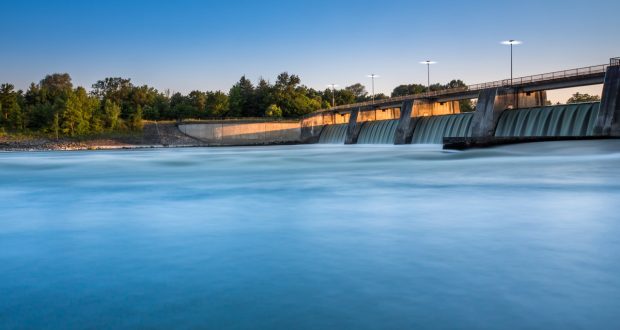By Edward Henderson | California Black Media
Prop 4 proposes issuing $10 billion in bonds to fund state and local parks, environmental protection projects, water infrastructure projects, energy projects, and flood protection projects. Additionally, 40% of the bond revenue would be used to fund activities that benefit communities with lower incomes or that are affected by environmental changes or disasters.
$3.8 billion would help pay to improve drinking water systems and prepare for droughts and floods. Another $1.5 billion would go to programs focused on wildfire preparedness and $1.2 billion would go to programs combating the rise of the sea level. The remaining funds would be divided up.
Supporters of the proposition argue that the threat climate change brings to the state is an immediate one. Issues like wildfires, water pollution, and extreme heat call for funding to be directed towards countering the effects of climate change. Several environmental groups are backing the measure as well.
Supporters say urgency to push for the proposition increased even more when Gov. Gavin Newsom scaled back the “California Climate Commitment,” which originally was a $54.3 billion spending package. In the most recent budget, it was cut to $44.6 billion.
Katelyn Roedner Sutter, State Director of the California Environmental Defense Fund, is on record saying, “We need to be not only helping communities adapt to climate change right now, but we also need to be reducing our climate pollution. This is not a problem that can wait until it’s convenient to fund in the budget.”
Ariana Rickard, public policy and funding program manager for Sonoma Land Trust, added, “Every Californian has felt the impact of the climate crisis, whether it is wildfires, extreme heat, flooding, sea level rise. I feel like this will resonate with voters who want to protect themselves and their communities.”
The bond measure would also require the Secretary of the Natural Resources Agency to publish a list of programs and projects on the agency’s website for the public, increasing transparency and accountability with the public. The measure would require the report to list the project’s location, objective, status, anticipated outcomes, total cost, amount of bond funding, and any matching funds.
Opponents argue that using bonds to pay for what they call “unproven technologies” is not the most prudent way to approach the issues. They believe the state should pay for projects like this without taking on more debt.
Governments, corporations and municipalities issue bonds when they need capital. An investor who buys a government bond is lending the government money. If an investor buys a corporate bond, the investor is lending the corporation money. Like a loan, a bond pays interest periodically and repays the principal at a stated time, known as maturity. Taxpayers eventually are burdened with paying for the bonds the Government issues.
Howard Jarvis of the Taxpayers Association is on the record stating that “These bonds will be paid by people decades from now that didn’t even get to vote for their authorization.”
A “yes” vote supports the state issuing $10 billion in bonds to fund state and local parks, environmental protection projects, water infrastructure projects, energy projects, and flood protection projects.
A “no” vote opposes the state issuing $10 billion in bonds to fund state and local parks, environmental protection projects, water infrastructure projects, energy projects, and flood protection projects.
 Westside Story Newspaper – Online The News of The Empire – Sharing the Quest for Excellence
Westside Story Newspaper – Online The News of The Empire – Sharing the Quest for Excellence





